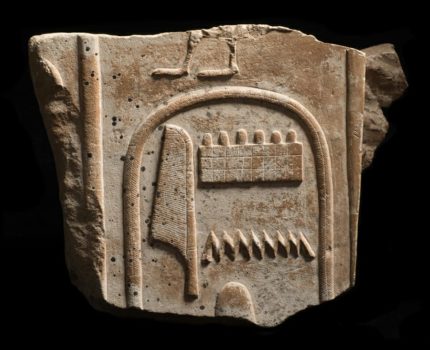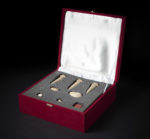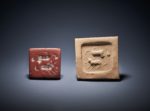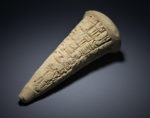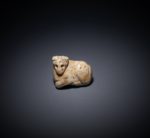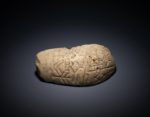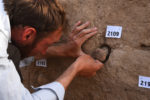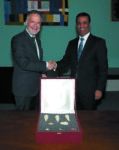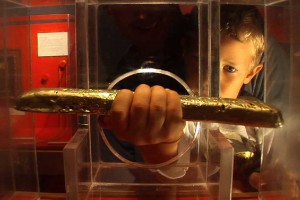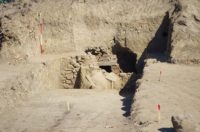 A Hellenistic era Thracian tomb near the town of Rozovo has been found to be the smallest ancient Thracian brick tomb ever excavated in Bulgaria. It is a beehive tomb, known in Greek as a tholos (“domed”) tomb because of the progressively smaller stacked rings of bricks that create an interior false dome that looks similar to a beehive. The style and materials of the construction date it to the first half of the 3rd century B.C.
A Hellenistic era Thracian tomb near the town of Rozovo has been found to be the smallest ancient Thracian brick tomb ever excavated in Bulgaria. It is a beehive tomb, known in Greek as a tholos (“domed”) tomb because of the progressively smaller stacked rings of bricks that create an interior false dome that looks similar to a beehive. The style and materials of the construction date it to the first half of the 3rd century B.C.
The Rozovo tomb is two miles from the Kazanlak Tomb, a 4th century B.C. tomb whose beehive dome is covered in elaborate murals depicting a funeral feast. The Kazanlak Tomb, declared a UNESCO World Heritage Site in 1979, is much larger and more expensively built and decorated than the Rozovo tomb, but they have one very important thing in common: they are the only beehive tombs ever found in Bulgaria whose domes are fully intact.
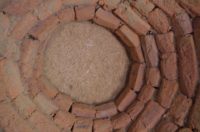 The Kazanlak Valley in central Bulgaria is famed for the great number of Thracian tombs in the area, most of them unexplored. There are an estimated 1,500 tumuli and only 300 of them have been officially excavated by archaeologists. All of those unmonitored, clearly distinguishable archaeological sites are frequent targets of looters hoping to find ancient funerary treasures which are eminently portable and in-demand goods on the illicit antiquities market.
The Kazanlak Valley in central Bulgaria is famed for the great number of Thracian tombs in the area, most of them unexplored. There are an estimated 1,500 tumuli and only 300 of them have been officially excavated by archaeologists. All of those unmonitored, clearly distinguishable archaeological sites are frequent targets of looters hoping to find ancient funerary treasures which are eminently portable and in-demand goods on the illicit antiquities market.
The little beehive tomb slumbered undisturbed in the embrace of the burial mound above it for two thousand years or so until it was brutally assaulted by looters in 2010. Their filthy work was immediately noticed, but it another eight years would pass before the Kazanlak Museum of History was able to secure the necessary funding from the Bulgarian government for the urgently-needed salvage excavation of the tomb.
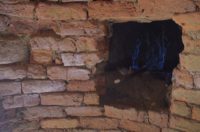 It was undoubtedly worth the wait. Even with all the wanton destruction wrought by those brutes in 2010 and their emptying the tomb of its contents, the architectural remains of the tomb itself are archaeologically priceless.
It was undoubtedly worth the wait. Even with all the wanton destruction wrought by those brutes in 2010 and their emptying the tomb of its contents, the architectural remains of the tomb itself are archaeologically priceless.
Lead archaeologists Georgi Nehrizov:
“It is curious that the treasure hunters’ digs were illogical and even a little. One of them was outside the burial chamber, and exposed its outer wall, which is totally pointless. Another dig came from the west, reached the burial chamber, and pierced its wall, which is also totally useless, destroying part of the dome room,” Nehrizov says.
He explains that the Ancient Thracian tomb near Rozovo is of the type of the Kazanlak Tomb, with a burial chamber and a small antechamber.
“This Hellenistic Era Thracian brick tomb is the second one after the Kazanlak Tomb to be discovered with a fully preserved dome. Several other such brick tombs have been found in the Kazanlak Valley [the Valley of Odrysian Thracian Kings] but they are less preserved, and material from them was used for other structures in later periods,” Nehrizov explains.”This is the smallest tomb of this kind to have been discovered so far. The dome’s top is covered with a stone slab. It consists of 23 rows of bricks of various shapes and sizes. There are rectangular, square, and sectoral bricks, and some of them are very thick. Our excavations lead to the conclusion that the bricks were baked here on the spot depending on the detail that the architect and builder needed, and everything was made to fit together,” the archaeologist elaborates.
In front of the burial chamber and the antechamber, there was a shed covered with Laconian – type roof tiles, large flat tiles which were pieced together with curved tiles.
“Apparently, the shed was a wooden structure. Such sheds have been found in other Ancient Thracian tombs in the Kazanlak Valley such as Shushmanets, the Griffins’ Tomb, the Helvetia Tomb, but here the shed seems better preserved. The treasure hunters didn’t dig from the south,” Nehrizov adds.
On the outside, the Rozovo Tomb was plastered with river stones shaping what the Bulgarian archaeologists refer to as a “coat”, which both solidified the structure and prevented atmospheric water from penetrating the tomb.
